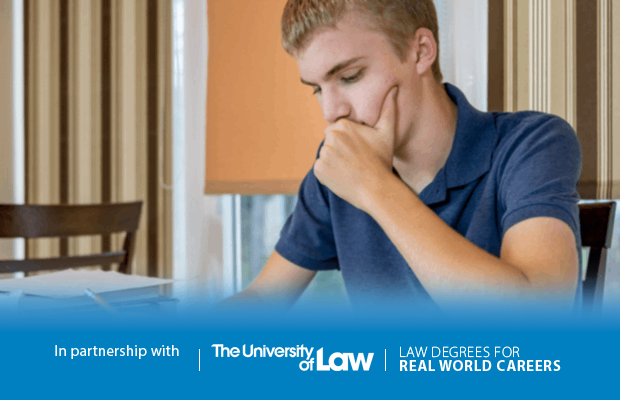Hello,
First thing to do would be to identify the best tort to sue under as it mentions lack of sleep and flashbacks, I immediately think of psychiatric harm.
Go through the problem with this in mind who suffers and does what?
I'd talk about each claimant against Ahmed seperately it's unlikely that the construction company could be sued as they cordoned of the work, acting reasonably and warning people so forget about them.
With Sarah and Rashid you will need to talk about the Alcock test as they are secondary victims and how rescuers apply to this. Other cases such as Hale v London Underground and McFarlane v EE Caledonia could be used to back up points.
Then you will need to go on to talk about Diana and whether she fits the Alcock criteria, think about how she heard about the shocking event.
Then conclude on all potential claims in the tort.
Hope this helps.
First thing to do would be to identify the best tort to sue under as it mentions lack of sleep and flashbacks, I immediately think of psychiatric harm.
Go through the problem with this in mind who suffers and does what?
I'd talk about each claimant against Ahmed seperately it's unlikely that the construction company could be sued as they cordoned of the work, acting reasonably and warning people so forget about them.
With Sarah and Rashid you will need to talk about the Alcock test as they are secondary victims and how rescuers apply to this. Other cases such as Hale v London Underground and McFarlane v EE Caledonia could be used to back up points.
Then you will need to go on to talk about Diana and whether she fits the Alcock criteria, think about how she heard about the shocking event.
Then conclude on all potential claims in the tort.
Hope this helps.
Original post by SiidraXo
Thank you so much. Could you help me with a structure please.
Of course. I mean there are a number of ways in which you could structure a response to a problem, for example you could write all you know on the area of law and then apply it to the scenario. However, to access the top marks you should integrate both. Here's what I would do.
Ahmed by choosing to ignore the cordoned road, causing an accident when he falls to the railway below may have an action against Allerton Construction under negligence provided he could satisfy the criteria for breach of duty and prove that they factually and legally caused the accident. This would be unlikely to succeed as Allerton Construction have not been careless and attempted to reduce the risks by cordoning off the road. Ahmed by not appreciating these signs can be argued to have caused his injuries. As a result of his impatience, he's caused an emergency scene leading to many people bringing claims for nervous shock. Nervous Shock is an extension of negligence so duty of care, breach of duty and causation must still be fulfilled. Psychiatric Damage was defined in Bourhill v Young as being damage to the mind or senses induced by a shocking event, the damage must also be medically recognised.
Sarah v Ahmed:
Sarah as a result of being the first individuals on scene trying to help Ahmed suffers from reoccurring flashbacks from the incident and nightmares, this may well be a recognised psychiatric illness so will qualify. In Vernon v Bosley the illness could be partly down to the physical trauma of the events and partly due to a mental illness. (D was liable when father suffered grief partly due to trauma d partly due to illness when he saw his children drown in car negligently driven). Primary victims are those who have immediate fear for their personal safety illustrated in Dulieu v White (D liable when he crashed his horse n' cart into the pub window C was working at.) Sarah was not in the vehicle when it crashed and as she attempts to help would be a rescuer. In Chadwick v BRB a rescuer could claim for nervous shock regardless on whether they feared their own safety. (D was liable for C's anxiety when he acted as a rescuer administering drugs train wreck survivors.) It doesn't matter if the rescuers are professional or not meaning Sarah comes under the claimants, in Hale v London Underground (Firefighter was able to claim when he was present at King's Cross fire.) This was overruled by White v Chief Constable of South Yorkshire and now rescuers have to fear for their own safety.( D not liable for PC's PTSD at Hillsborough as they didn't put themselves at risk.) Sarah would qualify under White as she gets close to petrol which is highly flammable and could ignite at any time to put sand down to avoid a fire, making it reasonable to fear her own safety. Sarah would succeed in a claim against Ahmed. ***
I'd do these with the other claimants, don't repeat cases though just say as mentioned above. Always talk about any possible defences at the end of C's claim. ***any defences here.
Hope this helps!

Thank you sooo much , would i be able to use this if you wouldnt mind , makes life so much easier pleasee
Original post by Calmclo
Of course. I mean there are a number of ways in which you could structure a response to a problem, for example you could write all you know on the area of law and then apply it to the scenario. However, to access the top marks you should integrate both. Here's what I would do.
Ahmed by choosing to ignore the cordoned road, causing an accident when he falls to the railway below may have an action against Allerton Construction under negligence provided he could satisfy the criteria for breach of duty and prove that they factually and legally caused the accident. This would be unlikely to succeed as Allerton Construction have not been careless and attempted to reduce the risks by cordoning off the road. Ahmed by not appreciating these signs can be argued to have caused his injuries. As a result of his impatience, he's caused an emergency scene leading to many people bringing claims for nervous shock. Nervous Shock is an extension of negligence so duty of care, breach of duty and causation must still be fulfilled. Psychiatric Damage was defined in Bourhill v Young as being damage to the mind or senses induced by a shocking event, the damage must also be medically recognised.
Sarah v Ahmed:
Sarah as a result of being the first individuals on scene trying to help Ahmed suffers from reoccurring flashbacks from the incident and nightmares, this may well be a recognised psychiatric illness so will qualify. In Vernon v Bosley the illness could be partly down to the physical trauma of the events and partly due to a mental illness. (D was liable when father suffered grief partly due to trauma d partly due to illness when he saw his children drown in car negligently driven). Primary victims are those who have immediate fear for their personal safety illustrated in Dulieu v White (D liable when he crashed his horse n' cart into the pub window C was working at.) Sarah was not in the vehicle when it crashed and as she attempts to help would be a rescuer. In Chadwick v BRB a rescuer could claim for nervous shock regardless on whether they feared their own safety. (D was liable for C's anxiety when he acted as a rescuer administering drugs train wreck survivors.) It doesn't matter if the rescuers are professional or not meaning Sarah comes under the claimants, in Hale v London Underground (Firefighter was able to claim when he was present at King's Cross fire.) This was overruled by White v Chief Constable of South Yorkshire and now rescuers have to fear for their own safety.( D not liable for PC's PTSD at Hillsborough as they didn't put themselves at risk.) Sarah would qualify under White as she gets close to petrol which is highly flammable and could ignite at any time to put sand down to avoid a fire, making it reasonable to fear her own safety. Sarah would succeed in a claim against Ahmed. ***
I'd do these with the other claimants, don't repeat cases though just say as mentioned above. Always talk about any possible defences at the end of C's claim. ***any defences here.
Hope this helps!
Ahmed by choosing to ignore the cordoned road, causing an accident when he falls to the railway below may have an action against Allerton Construction under negligence provided he could satisfy the criteria for breach of duty and prove that they factually and legally caused the accident. This would be unlikely to succeed as Allerton Construction have not been careless and attempted to reduce the risks by cordoning off the road. Ahmed by not appreciating these signs can be argued to have caused his injuries. As a result of his impatience, he's caused an emergency scene leading to many people bringing claims for nervous shock. Nervous Shock is an extension of negligence so duty of care, breach of duty and causation must still be fulfilled. Psychiatric Damage was defined in Bourhill v Young as being damage to the mind or senses induced by a shocking event, the damage must also be medically recognised.
Sarah v Ahmed:
Sarah as a result of being the first individuals on scene trying to help Ahmed suffers from reoccurring flashbacks from the incident and nightmares, this may well be a recognised psychiatric illness so will qualify. In Vernon v Bosley the illness could be partly down to the physical trauma of the events and partly due to a mental illness. (D was liable when father suffered grief partly due to trauma d partly due to illness when he saw his children drown in car negligently driven). Primary victims are those who have immediate fear for their personal safety illustrated in Dulieu v White (D liable when he crashed his horse n' cart into the pub window C was working at.) Sarah was not in the vehicle when it crashed and as she attempts to help would be a rescuer. In Chadwick v BRB a rescuer could claim for nervous shock regardless on whether they feared their own safety. (D was liable for C's anxiety when he acted as a rescuer administering drugs train wreck survivors.) It doesn't matter if the rescuers are professional or not meaning Sarah comes under the claimants, in Hale v London Underground (Firefighter was able to claim when he was present at King's Cross fire.) This was overruled by White v Chief Constable of South Yorkshire and now rescuers have to fear for their own safety.( D not liable for PC's PTSD at Hillsborough as they didn't put themselves at risk.) Sarah would qualify under White as she gets close to petrol which is highly flammable and could ignite at any time to put sand down to avoid a fire, making it reasonable to fear her own safety. Sarah would succeed in a claim against Ahmed. ***
I'd do these with the other claimants, don't repeat cases though just say as mentioned above. Always talk about any possible defences at the end of C's claim. ***any defences here.
Hope this helps!

Original post by SiidraXo
Thank you sooo much , would i be able to use this if you wouldnt mind , makes life so much easier pleasee
By all means use some of it, but that is not a perfect answer and you may want to double check some of the cases first! I don't want you to get in trouble for plagiarising, now you have a template I'm sure you amend this and add to it the other claimants.
Hi,For some reason the scenario won't come up on my thread but with Sarah as a rescuer she sort of comes within her own category, rescuers having their own category in White v Chief Constable of South Yorkshire only rescuers who feared immediate personal danger and were actively taking part in the clean up could claim, perviously in cases such as Chadwick v BRB it didn't matter as such a rescuer could claim whether they had feared personal danger or not.
Rashid may be a rescuer too wasn't he Ahmed's brother and a firefighter as a firefighter you can say that he would still come under the rescuer conditions as professional rescuers could claim illustrated in Hale v London Underground. But you may want to say that he still needs to fear immediate personal injury now a condition to claim in White. But check at the case Greatorex v Greatorex their may be a problem with Rashid's claim.
Rashid may be a rescuer too wasn't he Ahmed's brother and a firefighter as a firefighter you can say that he would still come under the rescuer conditions as professional rescuers could claim illustrated in Hale v London Underground. But you may want to say that he still needs to fear immediate personal injury now a condition to claim in White. But check at the case Greatorex v Greatorex their may be a problem with Rashid's claim.
Original post by SiidraXo
Helloo .. would sarah and rashid be primary or secondary victims x above you sed they are both secondary but then you wrote primary @Calmclo
Quick Reply
Related discussions
- Regarding a level law
- Immar's advice for anyone wanting to study Law
- Law conversion / GDL
- Cambridge Interview
- AQA A Level Law Paper 2 (7162/2) - 4th June 2024 [Exam Chat]
- Law Text Books
- Oxford and Cambridge Past Papers
- Tort revision,
- A level law
- AQA A Level Law Paper 3 (7162/3) - 10th June 2024 [Exam Chat]
- Tips for getting a 1st in Law timed exams
- Warwick Law
- A Level Law help!
- What's the best grade you ever achieved in your first year of uni?
- (AQA) A Level Law Notes + Study Group 📚💼
- How to catch up on first year - Law LLB - please read post!
- LPC Exams ULaw
- Law and Climate Justice degree QMUL
- OCR A Level Law
- A-level law exam questions and structuring
Latest
Trending
Last reply 1 week ago
OCR A-level Law Paper 3 (H418/03) - 12th June 2023 [Exam Chat]Trending
Last reply 1 week ago
OCR A-level Law Paper 3 (H418/03) - 12th June 2023 [Exam Chat]



